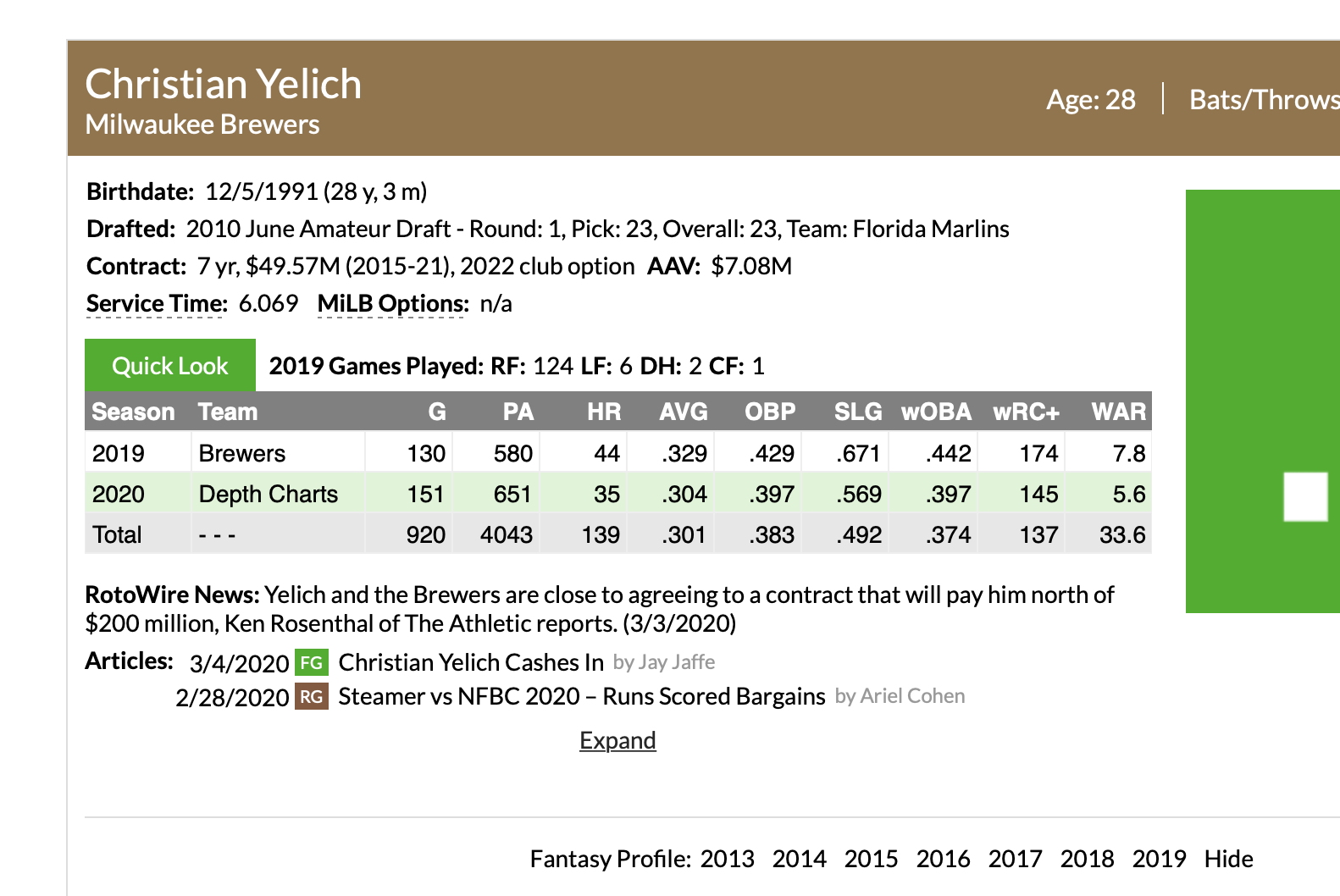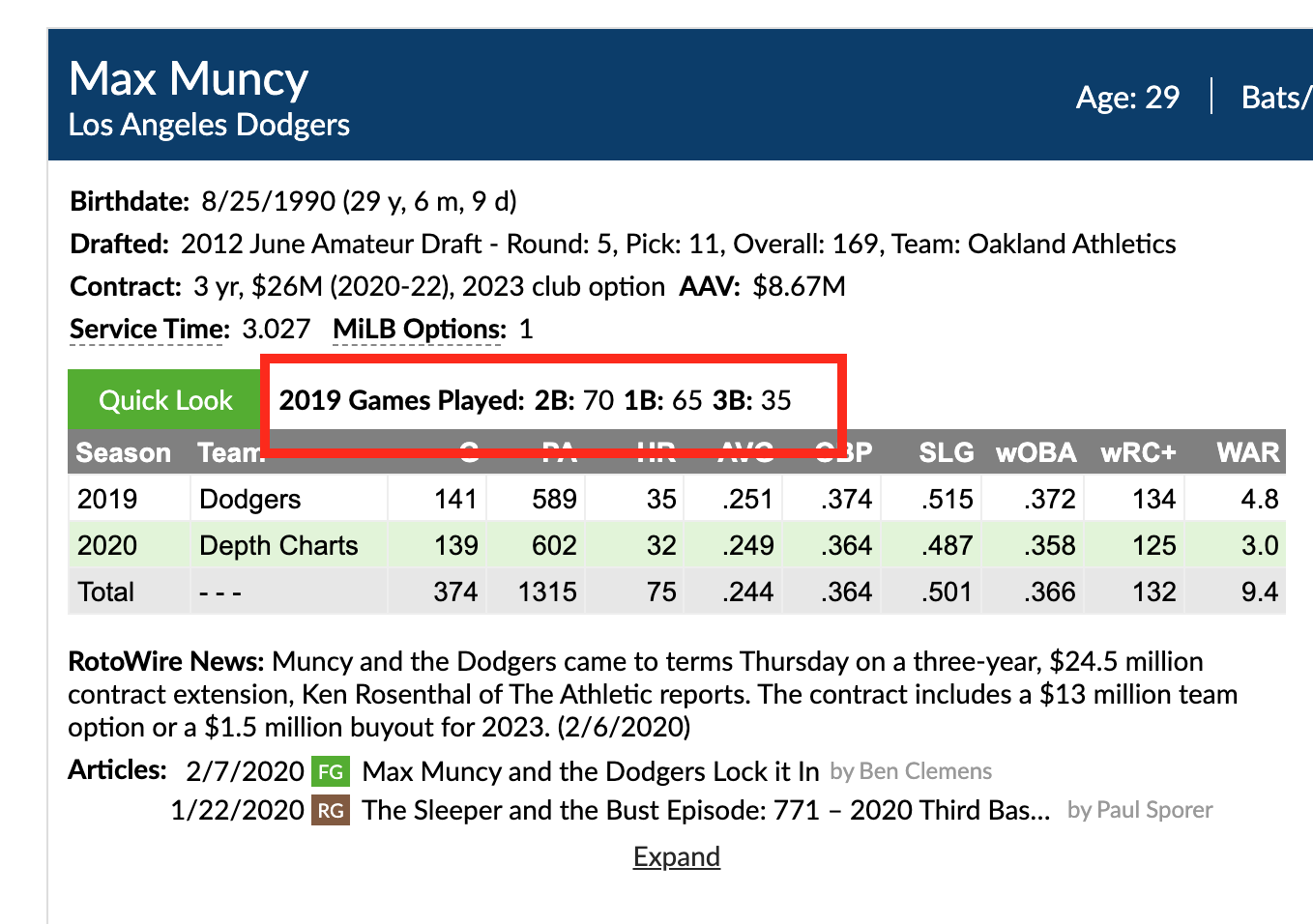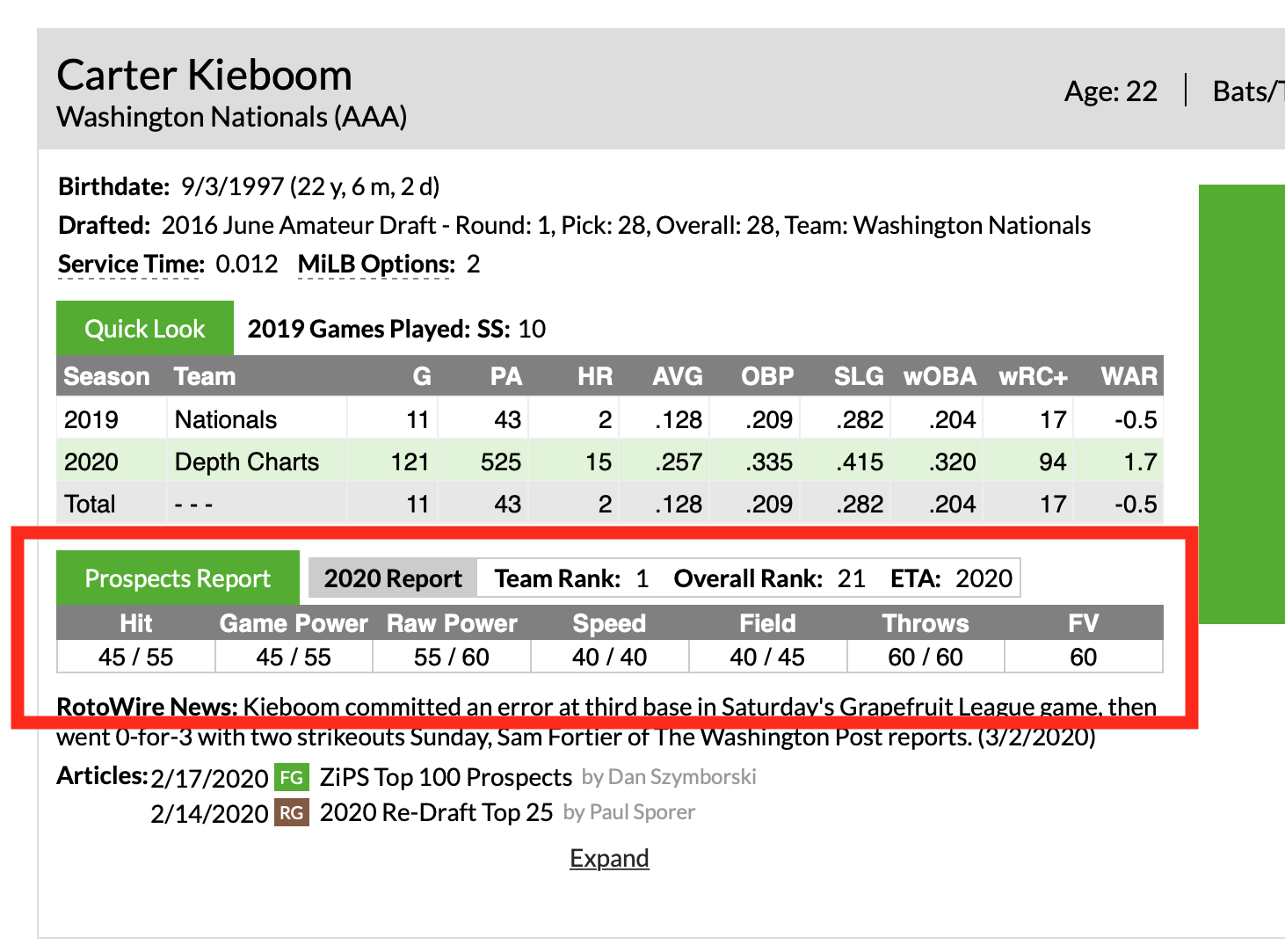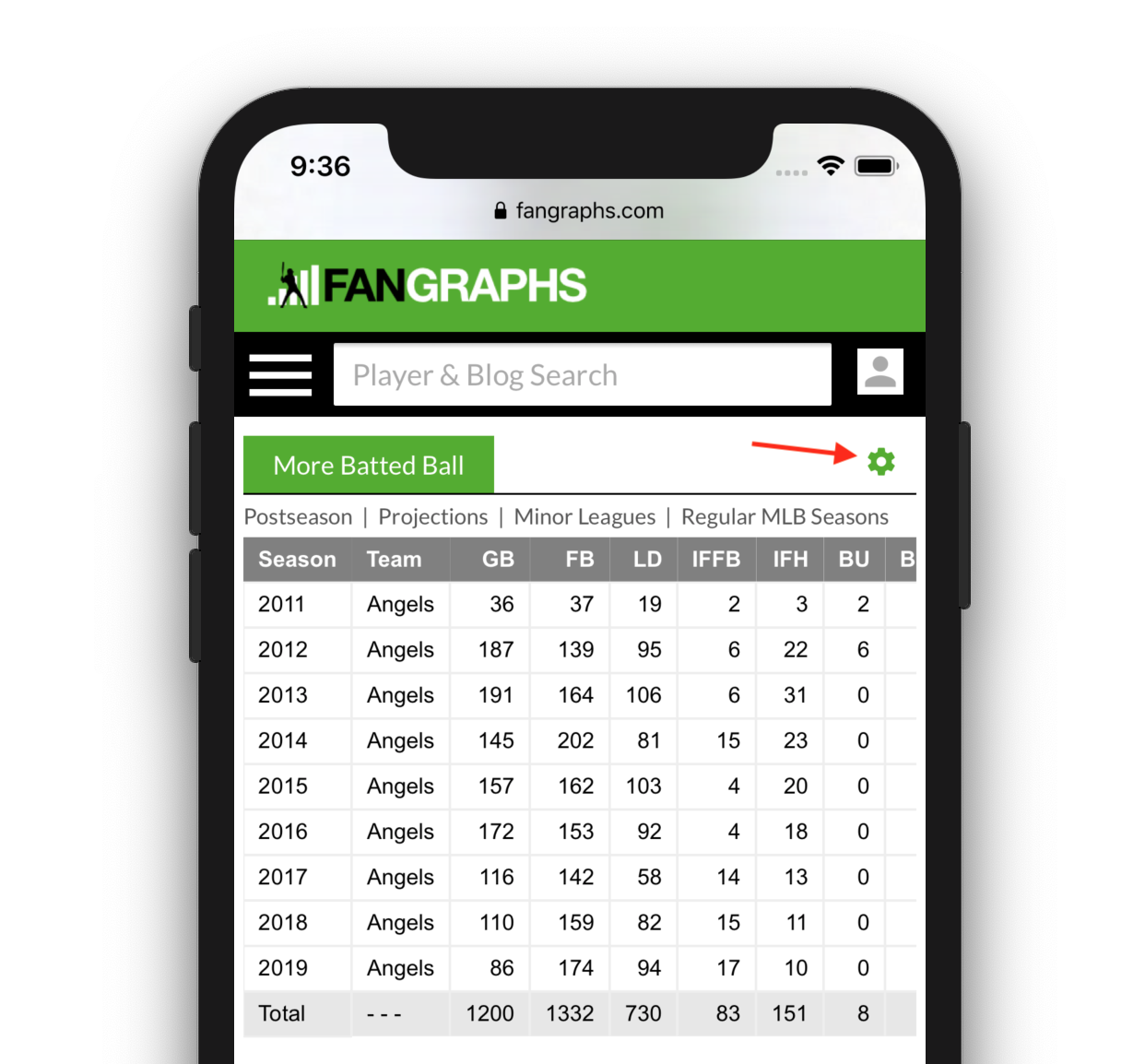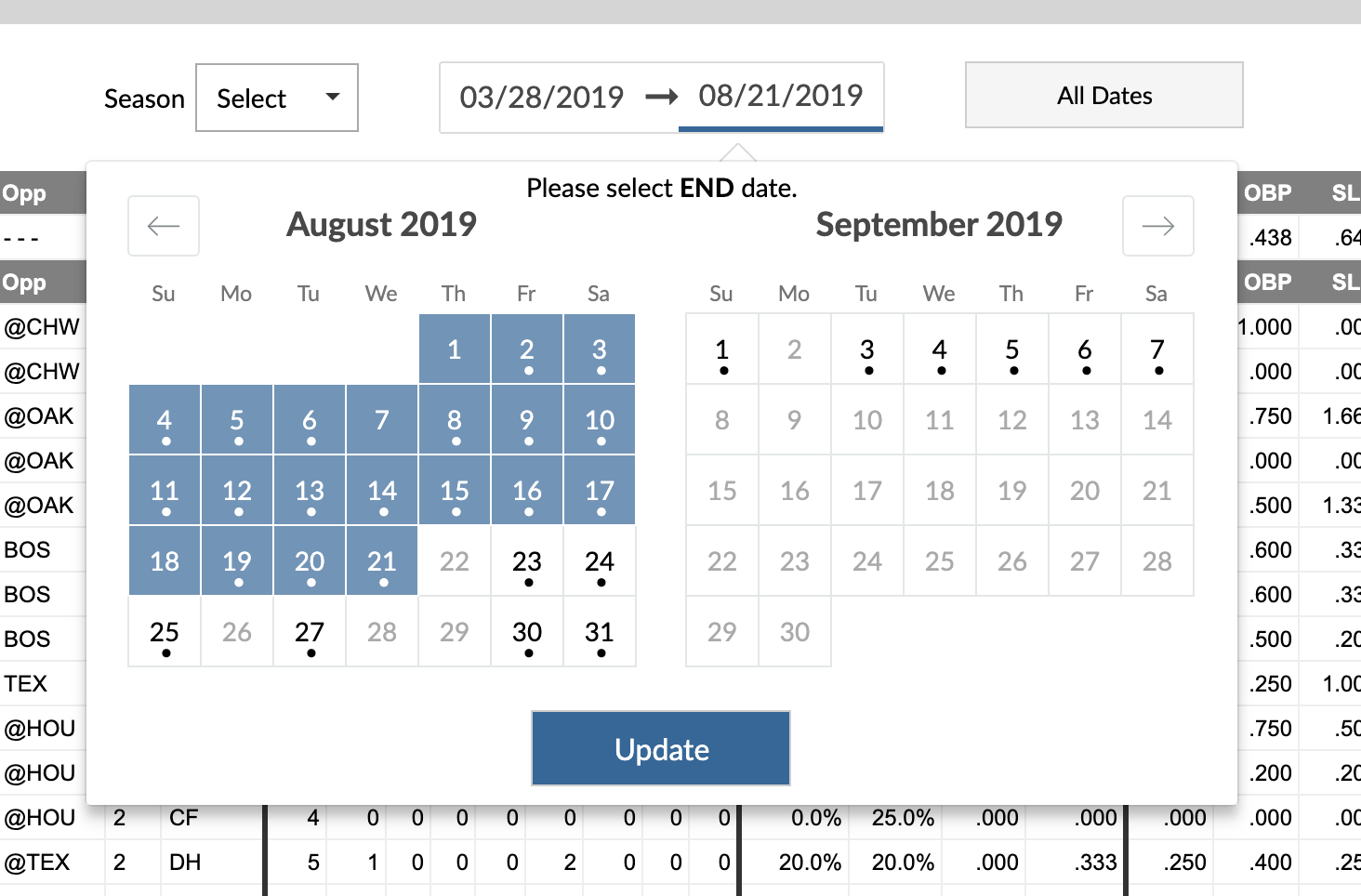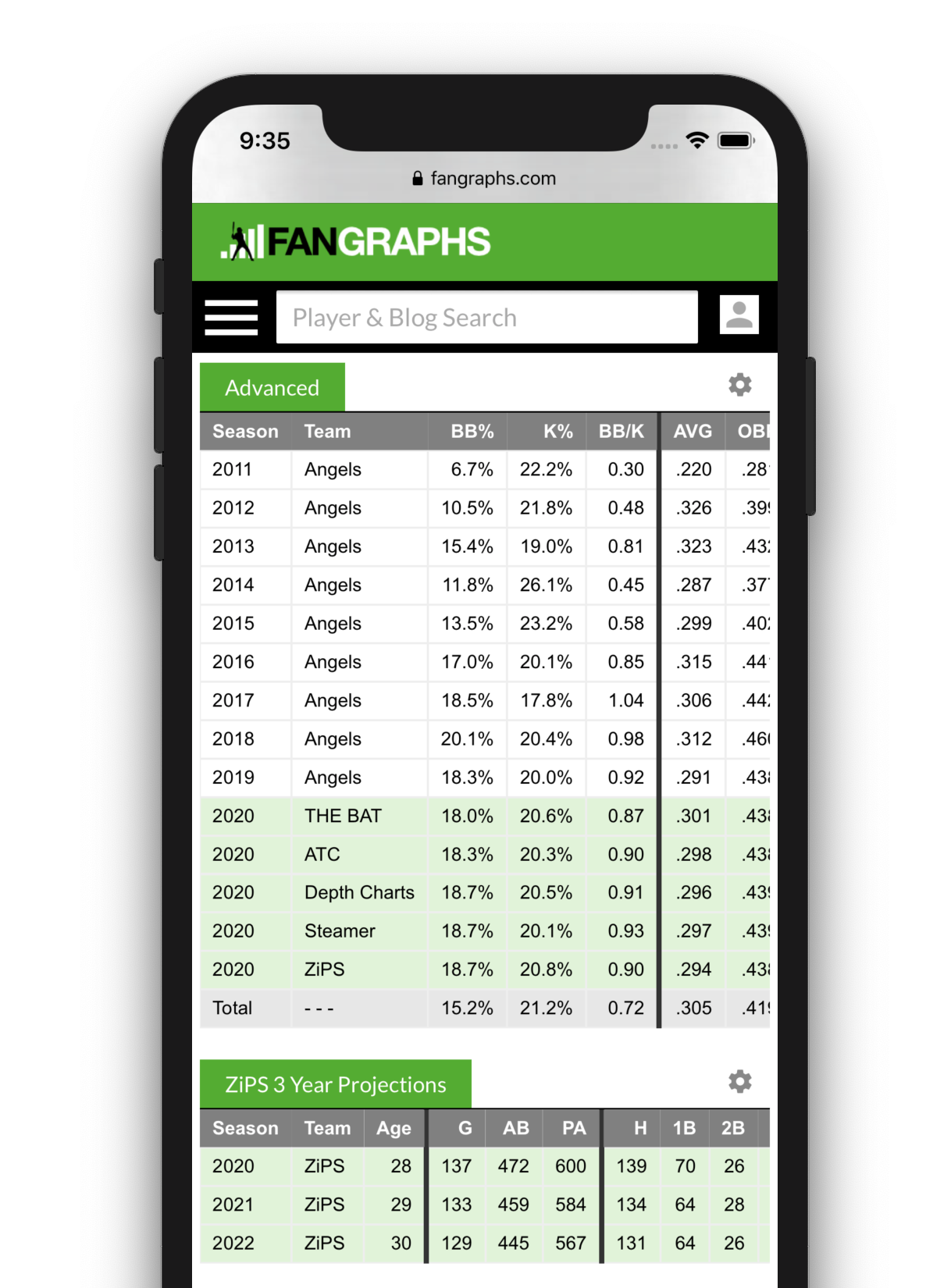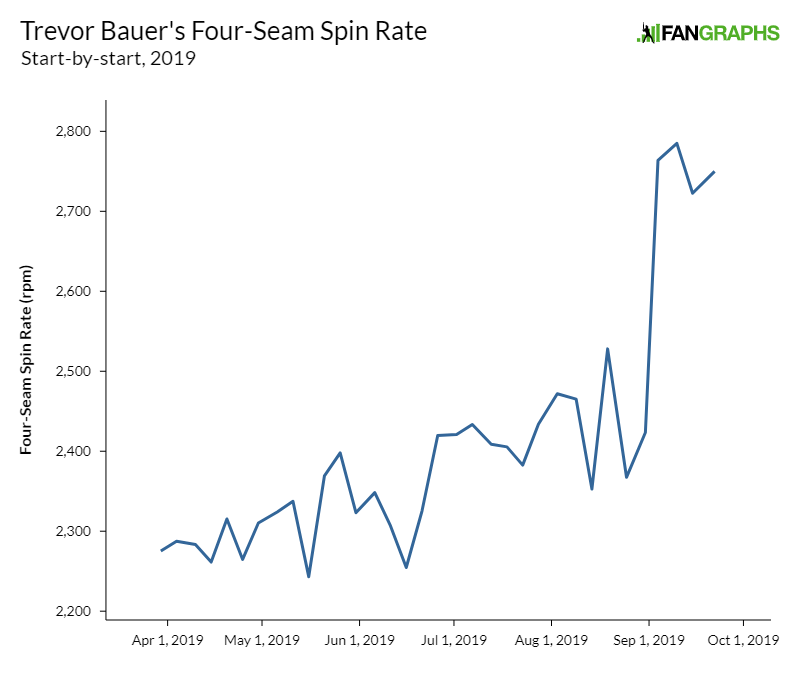Top 38 Prospects: Toronto Blue Jays
Below is an analysis of the prospects in the farm system of the Toronto Blue Jays. Scouting reports are compiled with information provided by industry sources as well as my own observations. For more information on the 20-80 scouting scale by which all of our prospect content is governed, you can click here. For further explanation of the merits and drawbacks of Future Value, read this.
All of the numbered prospects here also appear on The Board, a resource the site offers featuring sortable scouting information for every organization. It can be found here.
| Rk | Name | Age | Highest Level | Position | ETA | FV |
|---|---|---|---|---|---|---|
| 1 | Nate Pearson | 23.6 | AAA | RHP | 2020 | 60 |
| 2 | Simeon Woods Richardson | 19.5 | A+ | RHP | 2023 | 50 |
| 3 | Jordan Groshans | 20.3 | A | 3B | 2023 | 50 |
| 4 | Orelvis Martinez | 18.3 | R | SS | 2023 | 50 |
| 5 | Alek Manoah | 22.2 | A- | RHP | 2022 | 45+ |
| 6 | Alejandro Kirk | 21.3 | A+ | C | 2022 | 45+ |
| 7 | Gabriel Moreno | 20.1 | A | C | 2021 | 45 |
| 8 | Anthony Kay | 25.0 | MLB | LHP | 2020 | 45 |
| 9 | Thomas Hatch | 25.5 | AA | RHP | 2020 | 40+ |
| 10 | Miguel Hiraldo | 19.5 | A | 3B | 2022 | 40+ |
| 11 | Rikelvin de Castro | 17.1 | R | SS | 2024 | 40+ |
| 12 | Adam Kloffenstein | 19.5 | A- | RHP | 2023 | 40 |
| 13 | Kendall Williams | 19.5 | R | RHP | 2024 | 40 |
| 14 | Dasan Brown | 18.5 | R | CF | 2024 | 40 |
| 15 | Griffin Conine | 22.7 | A | RF | 2022 | 40 |
| 16 | T.J. Zeuch | 24.6 | MLB | RHP | 2020 | 40 |
| 17 | Alberto Rodriguez | 19.4 | R | OF | 2022 | 40 |
| 18 | Kevin Smith | 23.7 | AA | SS | 2021 | 40 |
| 19 | Leonardo Jimenez | 18.8 | A | SS | 2022 | 40 |
| 20 | Eric Pardinho | 19.2 | A | RHP | 2022 | 40 |
| 21 | Estiven Machado | 17.4 | R | 2B | 2024 | 40 |
| 22 | Julian Merryweather | 28.4 | AAA | RHP | 2020 | 40 |
| 23 | Reese McGuire | 25.0 | MLB | C | 2020 | 40 |
| 24 | Otto Lopez | 21.4 | A | SS | 2021 | 40 |
| 25 | Joey Murray | 23.5 | AA | RHP | 2022 | 40 |
| 26 | Yennsy Diaz | 23.3 | MLB | RHP | 2020 | 40 |
| 27 | Riley Adams | 23.7 | AA | C | 2021 | 40 |
| 28 | Will Robertson | 22.2 | A- | RF | 2023 | 40 |
| 29 | Jackson Rees | 25.6 | A+ | RHP | 2020 | 40 |
| 30 | Curtis Taylor | 24.6 | AA | RHP | 2020 | 35+ |
| 31 | Javier D’Orazio | 18.2 | R | C | 2023 | 35+ |
| 32 | Patrick Murphy | 24.8 | AA | RHP | 2020 | 35+ |
| 33 | Roither Hernandez | 22.0 | R | RHP | 2021 | 35+ |
| 34 | Anthony Alford | 25.6 | MLB | CF | 2020 | 35+ |
| 35 | Chavez Young | 22.7 | A+ | CF | 2021 | 35+ |
| 36 | Tanner Morris | 22.5 | A- | LF | 2023 | 35+ |
| 37 | Naswell Paulino | 19.9 | A | LHP | 2023 | 35+ |
| 38 | Hector Perez | 23.8 | AA | RHP | 2020 | 35+ |
Other Prospects of Note
Grouped by type and listed in order of preference within each category.
Young Pitching
Emanuel Vizcaino, RHP
Alejandro Melean, RHP
Sem Robberse, RHP
Jiorgeny Casimiri, RHP
Winder Garcia, RHP
Michael Dominguez, RHP
Yunior Hinojosa, RHP
Luis Quinones, RHP
Jol Concepcion, RHP
Vizcaino, 20, must have gotten hurt at the end of Extended Spring Training last year because he pitched into late-June but never threw a pitch at an affiliate. He’s a lanky relief prospect with a good three-pitch mix, and his heater was in the low-90s when healthy. Melean is advanced from a body and stuff perspective, sitting 90-94 at age 19, but his strike-throwing did not progress last year. Robberse and Casimiri are both medium-framed 18-year-olds from the Netherlands. Both sit in the low-90s; Robberse’s breaking ball has better natural shape and snap. Winder Garcia is a 5-foot-10 18-year-old up to 94, and has an average slider. Michael Dominguez is a physically mature 19 and only sits in the low-90s, but his fastball has plus spin and vertical movement. Hinojosa is similar but he’s 20, sitting 89-93. Quinones, 22, has one of the highest-spinning heaters in the entire org and struck out a lot of guys in Vancouver last year. He needs a grade and a half of command improvement to be a reliever. Concepcion is 22 and has big arm strength (92-96), but little else right now.
Bench/Role Players
Ryan Noda, 1B/LF
Josh Palacios, RF
Santiago Espinal, INF
Forrest Wall, CF
Kevin Vicuña, INF
Noda has elite walk rates, his exit velos are very strong, and he’s hit for power at every level of the minors. He also strikes out a lot for someone older than is usual for his level, which I think is evidence he’ll fall on the wrong side of the Quad-A bubble. Palacios is a lefty stick tweener outfield type who runs well, takes good at-bats, and has doubles pop. Espinal is a multi-positional infielder with below-average power. He might be a 25th or 26th man, but I think the lack of offensive impact means he’s closer to replacement level than above it. Wall can really run and has some contact skills. Vicuña has contact skills and can play all over but is a few years away from a bench infielder role.
Stiff-bodied, Older Relief Types
Maximo Castillo, RHP
Jackson McClelland, RHP
Ty Tice, RHP
Brad Wilson, RHP
Castillo pitched pretty well in a rotation last year. He’s a bowling ball with an upright delivery and two above-average pitches in his heater and split. His slider/cutter is fine, too, but he has a relief-only mechanical and physical look. McClelland throws really hard (up to 100), and also has a good split, but 30 control. Tice and Wilson are both fastball/slider relief sorts. Wilson is up to 96, Tice up to 97.
System Overview
Almost every pitcher the Blue Jays have acquired via trade over the last year or so has had a high spin rate fastball, at or above 2400 rpm. It’s clearly something teams are selecting for more often in general, but not with the same amplitude as Toronto. Hatch, Kay, Juan De Paula (not on the list), Perez, and even some of their waiver tries, like David Garner, have been up there. This proclivity has not been true of the amateur department, which has drafted and signed athletes with good frames, and college hitters with measurable power.
A lot of the relievers in their mid-20s actually need to see big league time this year. From among that unusually large group should emerge the short-term core of Jays bullpen and probably a trade chip or two, especially if Merryweather pitches like I expect he will.
There are lots of changeups and splits in this org, though it hasn’t been one that’s had success developing breaking balls. The org has also had trouble finding complementary pieces to fit around the young core of Bichette, Guerrero, and Biggio (who, as an aside, I was light on — his approach is elite, and he should’ve been on my Top 100 when he was eligible), though the team’s strategy has been clear. The Jays are everyone’s place to ship toolsy, frustrating upper-level players who are squeezed off better rosters, with Socrates Brito and Derek Fisher the new models.
